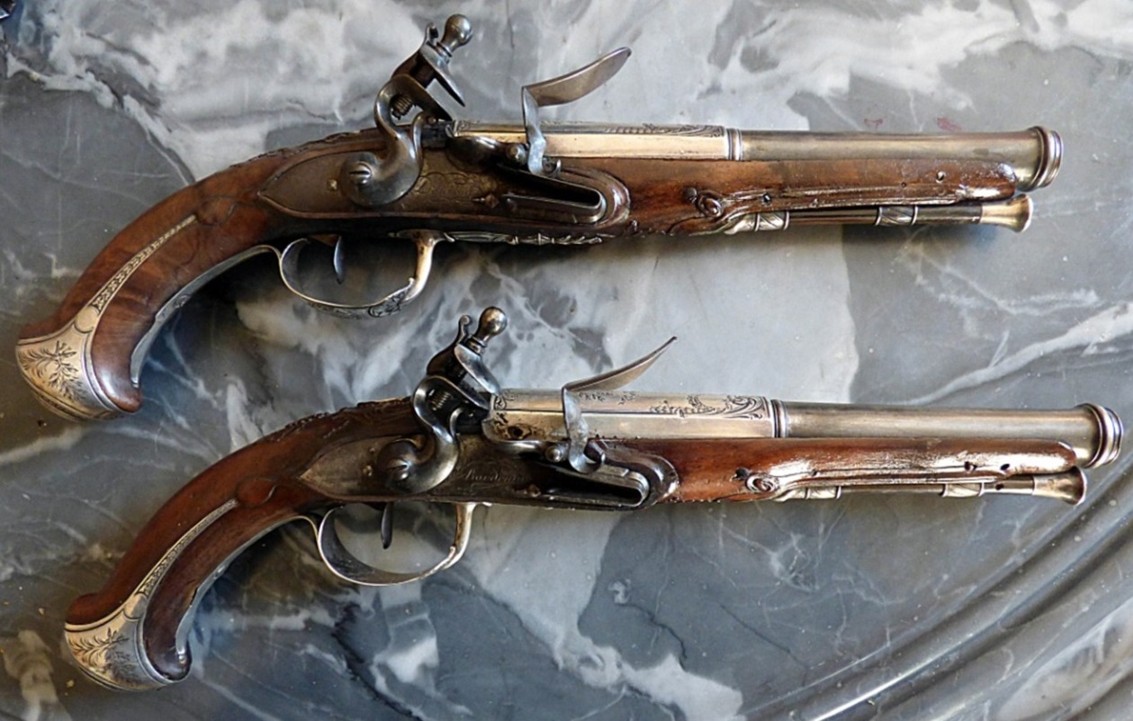
DELAROA
Pair of flintlock pistols by DELAROA in Bordeaux

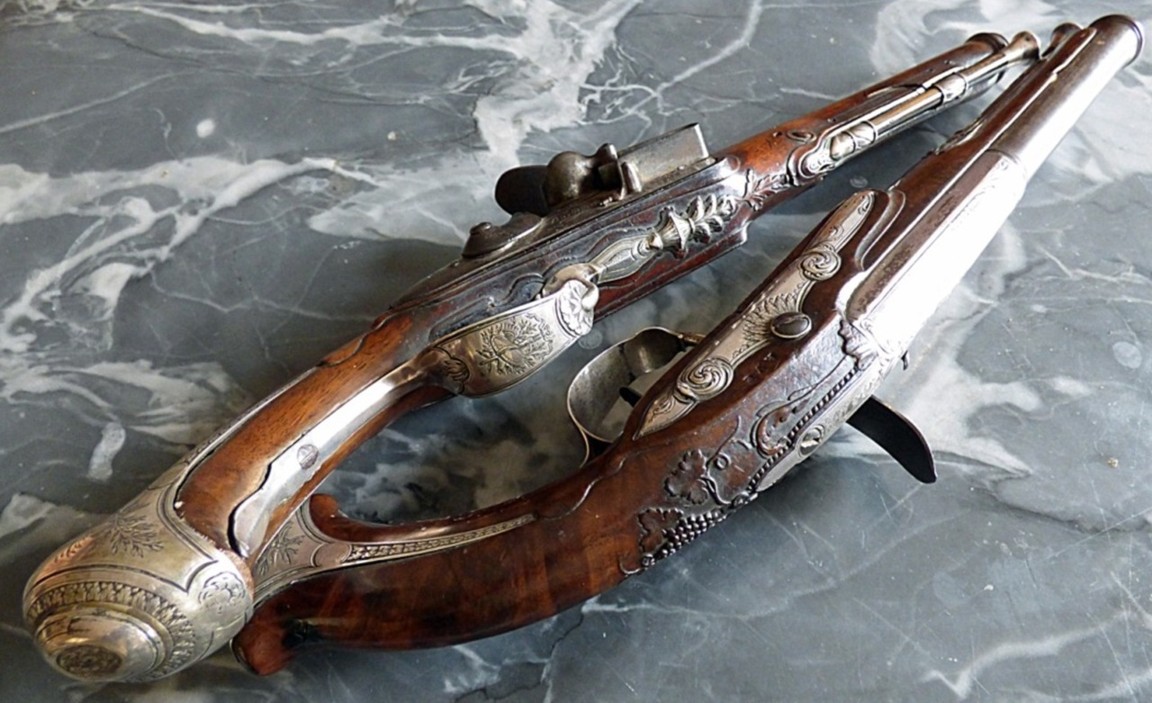
Made around 1780/90 In a Louis XV style. We can think of a "Chartron" owner,
a
rich merchant focused on both wine production and the Navy.
Which is a simplified summary of the Bordeaux activity.
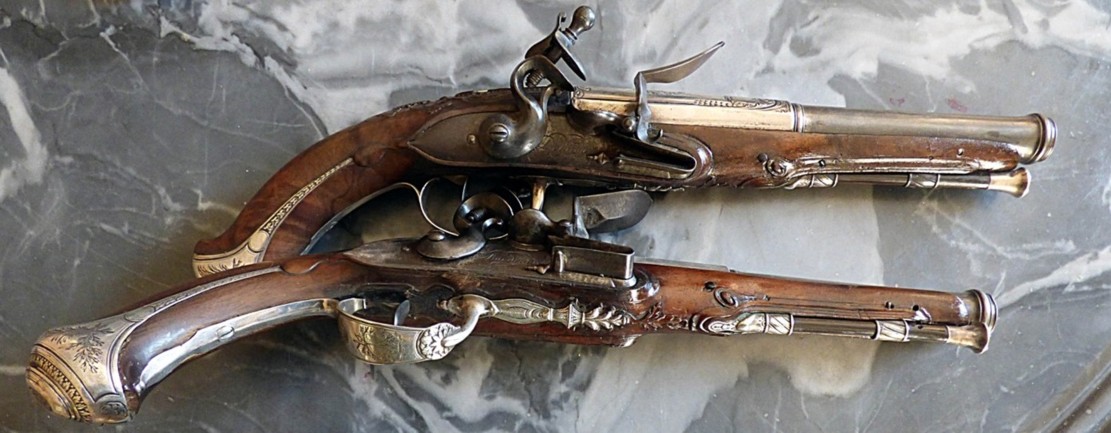
Exceptional work of art combining goldsmithing and sculpture as an allegory of the vine.
The artist is necessarily Arq. Du Roi to be authorized to use silver. No marks and punches
except on the rods however. A reflection without doubt of a freedom authorized in
Bordeaux
at this time, which raises the question of a revolutionary era achievement?
The port facing the west Atlantic and the triangular trade, enjoyed significant prosperity. at
the end of the century. This was sometimes displayed in the silver plating of its gunsmith
production
for the richest clients wanting to demonstrate their success.
A gunsmith plated his plates, here they are the barrels.
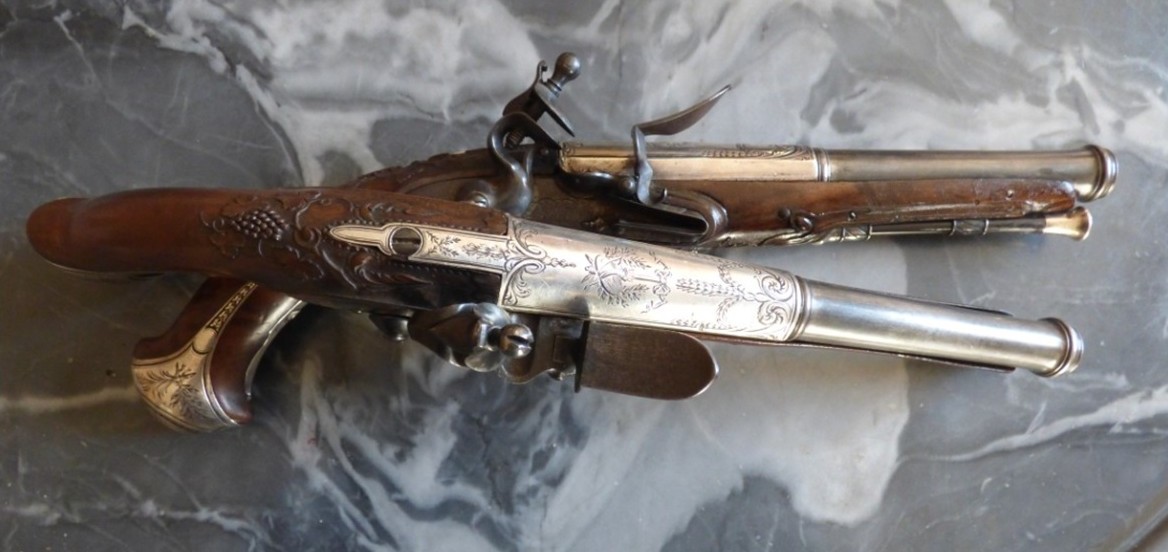
Origin of manufacture:
Delaroa or delarou arq in bordeaux (1815-1825) Jarlier p,79
Delaroa melchior arq in saint etienne 1783 Jarlier p,79
Delaroa de la croix controller of the plates saint Etienne 1792
Delaroa: Arq in paris under the empire 35 rue richelieu
Family: A well-known writer: Galerie de portraits Forésiens. Biography. Weapons.
Currencies
By Joseph DELAROA mid-19th century originally from Périgueux
Traces in: Historical studies on the Forez: Armorial and genealogies of families
who ...
By Jean Antoine de La Tour de Varan
In light of this research, what can we say?
That the origin of the name is located in the Forez. That personalities emerge from the 16th
century with important positions in the society of the time. It seems that a disagreement
arose
with the authority in place in the second part of the 18th century.
Discussion: The "Delaroa" arquebusiers appear around 1760 in Saint Etienne. Their position
is high in the production chain, which supposes a solid family establishment and a good
reputation. The trace in Paris of a homonymous arquebusier is not unusual at the end of the
18th century and under the empire. Because the arquebusiers who have the means open shop
in the capital. Others even more illustrious did it too, in search of customers from the end of
the 17th century. We can assume that the chief editor from Saint-Etienne settled in Paris.
What about the Bordeaux man? Either it is the same person with plans for expansion
towards the sea, or a son of his lineage. The fact of meeting a writer with the same name in
the Bordeaux area and devoting his writings to the Forez armory is, in my opinion,
significant of a family link. The name is sometimes misspelled "Delarou" this is common
around the revolution. When this is intentional, this trick is convenient to cover one's
tracks. It is also possible that the Occitan pronunciation in a spoken language of the 18th
century, led to this distortion. A stamp in the wood made of three letters AVE is the mark
of a qualified reviser or chief editor. This practice was in force at the end of the 18th century
on
luxury weapons intended for officers.

The fittings:
In very fine silver, beautifully fretted and engraved. It must be remembered that only the
King's arquebusiers had the right to make such fittings in precious metals. Mr Delaroa must
have been one of them. The barrels are plated with a thick protective sheet with beautiful
engravings,
on one of them we can see a poorly engraved stamp.
They are of the style before fashionable in the years 1730/1750. But made around
1790.
The barrels:
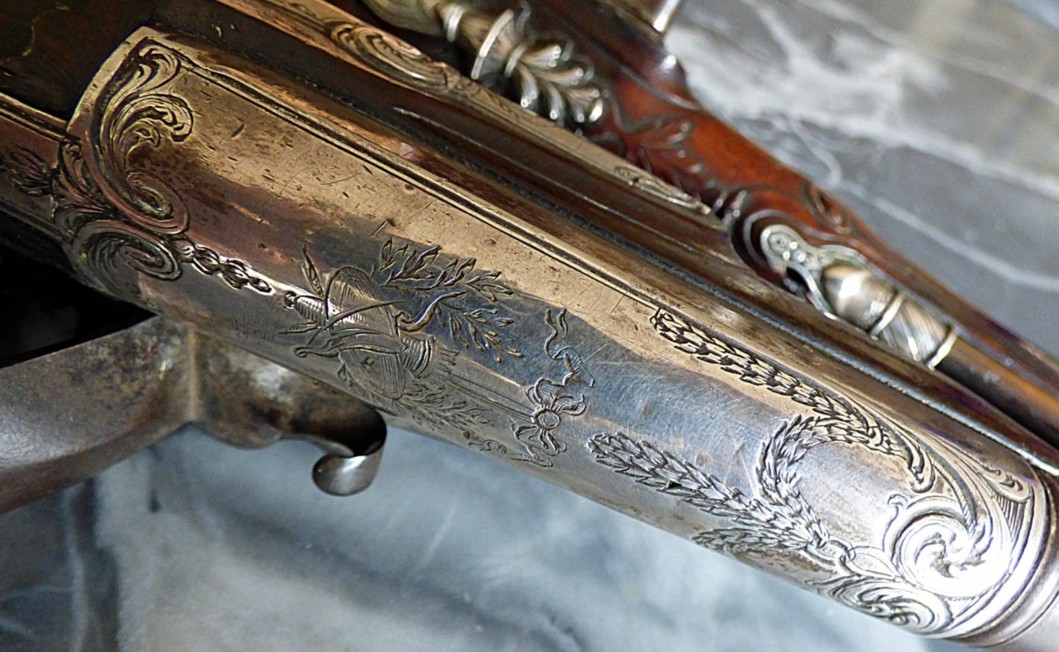
In two roughly equal parts, the front part "tromblonée" in the shape of a naval cannon
mouth is common under Louis XVI. The rear part domed on the top is more late Louis XV.
The
caliber is that of the officers, the bore is smooth.
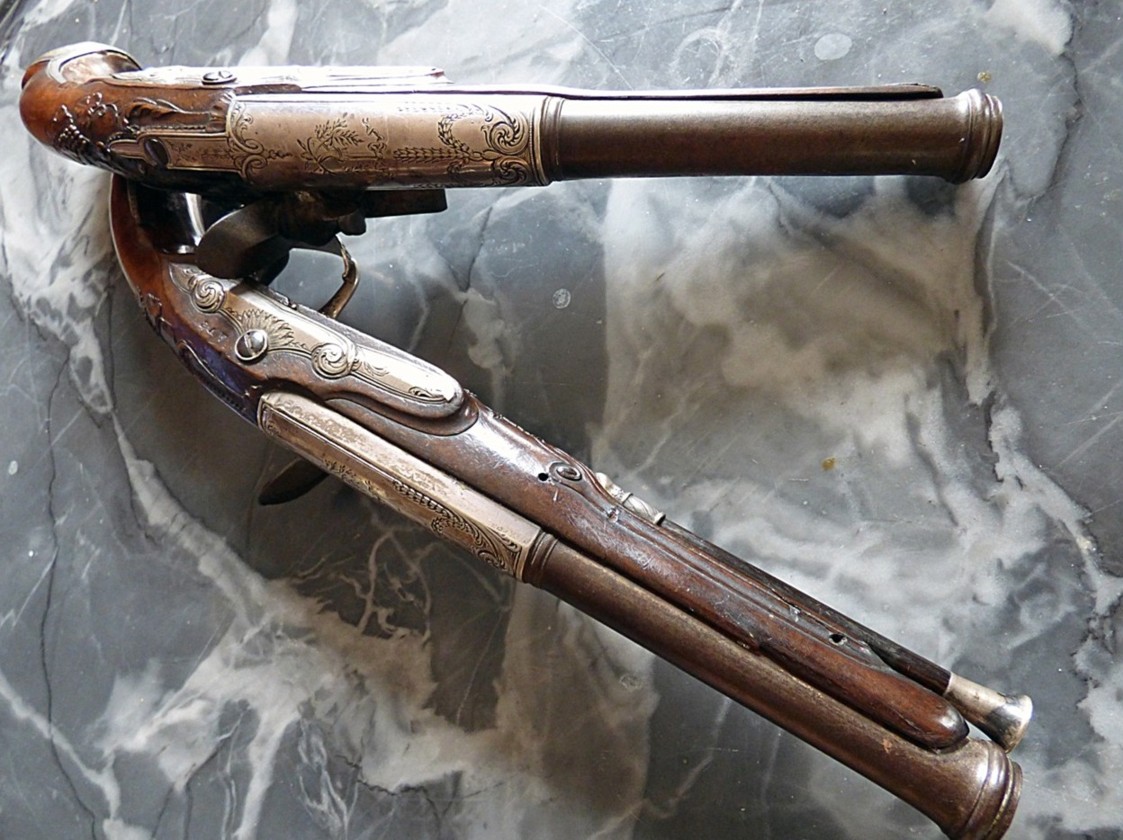
The locks:
With a round body, they have a flange for the battery and "espalets" hammers. These two
elements
allow us to establish the manufacture at the end of the 18th century.
The wood:
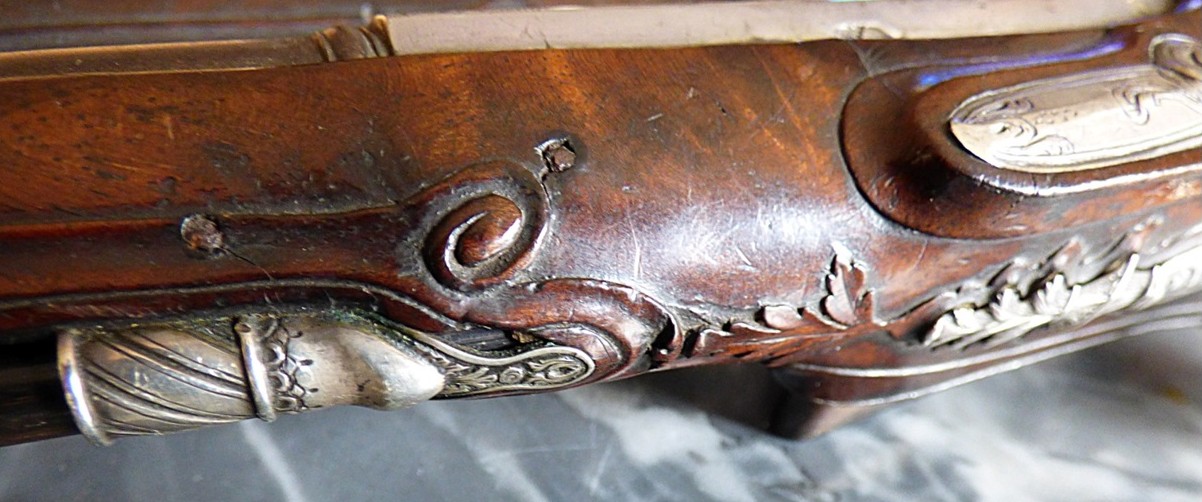
Magnificent very fine sculptures, the traces of the sculptor's chisel are still visible around
the grapes. Allegorical homage to the terroir. The whole is reminiscent of the Louis XV style
but
however with a butt with a finer pommel.
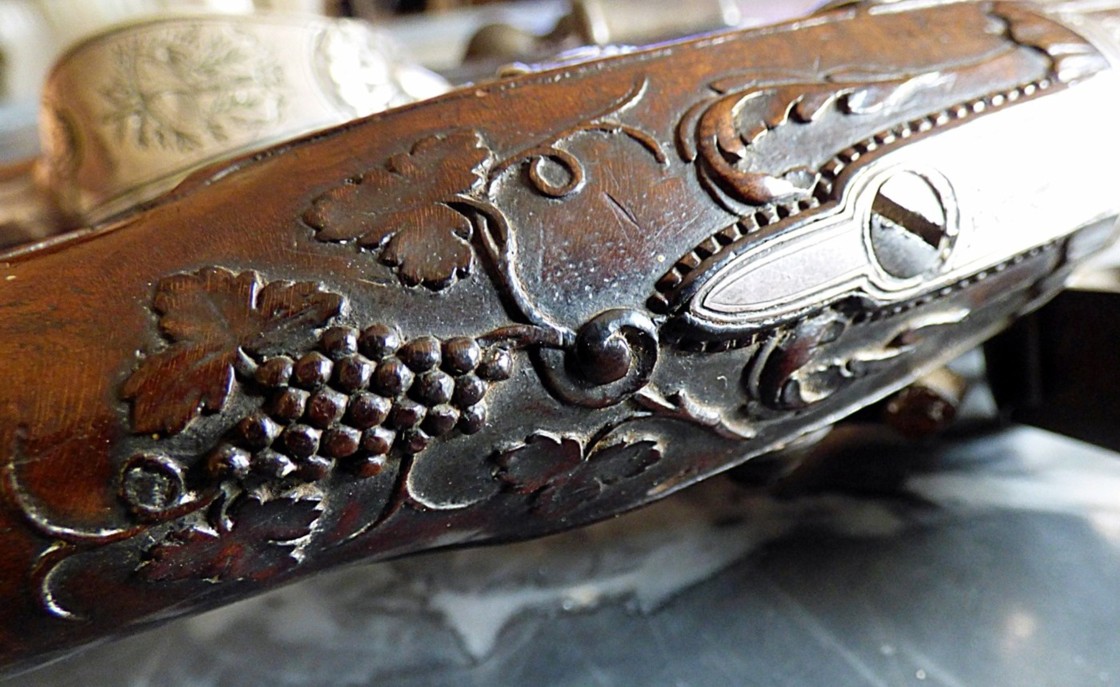
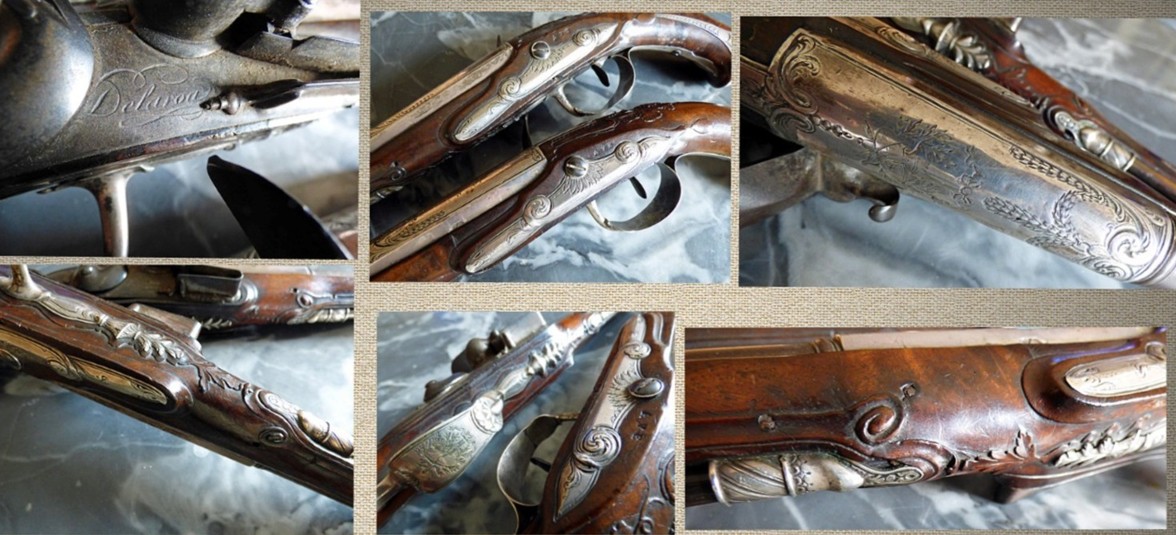
GAETSON